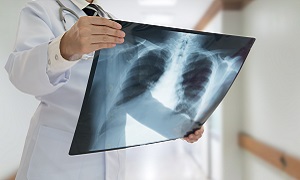Thymectomy
Thymectomy is a surgery for removing the thymus gland, which is located in the upper portion of the chest, behind your breastbone. The benefits of this procedure may not be experienced immediately after the procedure, which is why the patient will need to continue their medical regimen.
A thymus gland has been shown to play an important role in the development of myasthenia gravis. Removing the thymus is generally recommended for people over 60 years of years, who experience moderate to severe weakness from myasthenia gravis.
Purpose
The thymus gland can help in immune cell growth. It is generally active when you are an infant, but its function reduces as your age increases. The thymus acts abnormally when a person suffers from a condition known as myasthenia gravis. To treat this condition, thymectomy is sometimes considered.
This procedure is also considered if the thymus has a tumor, which is termed as thymoma. These tumors are generally associated with myasthenia gravis but might also be associated with other conditions.
The treatment can help to reduce the weakness of the patient, reduce the use of medications, or even achieve permanent remission of the disease.
Preparation
Prior to your procedure, your doctor might require a few tests which might include:
- X-rays
- Blood tests
- Urine tests
- Breathing tests
- Muscle strength tests
A special diet might be required which can include withholding foods and fluids prior to the surgery.
It is important to take the prescribed medications as your doctor recommends.
Arrange to have someone drive you as well as pick you up from the hospital or surgery center. You might also need to arrange for someone to help you at home, after the procedure.
Procedure
The procedure can be performed using several different surgical techniques which include:
Transsternal thymectomy
In transsternal thymectomy, the incision is made in your skin over the breastbone and the breastbone is divided to expose the thymus. This approach is also generally used for heart surgery. The surgeon then removes the thymus through this incision. He/she might remove any residual fat as well in the center of the chest which may be harboring extra thymic cells.
Transcervical thymectomy
In transcervical thymectomy, the surgeon creates the incision across the lower part of your neck, slightly above the breastbone. The surgeon will remove your thymus using this incision without dividing the sternum. This is mostly used in patients who are without thymoma with certain body-types.
Robotic thymectomy and Video-assisted thoracoscopic thymectomy (VATS)
Robotic thymectomy and Video-assisted thoracoscopic thymectomy (VATS) are minimally invasive techniques that use multiple tiny incisions in the chest. A camera is first inserted through one of the incisions and the surgery is performed with the guidance of the video. The surgeon then removes the thymus with the help of special surgical tools inserted into the other incisions. In a robotic-assisted procedure, the surgeon makes the use of robotic arms for performing the surgery. Their goal is to provide the same result as the more invasive transsternal approach with less post-operative discomfort as well as quicker recovery.
Generally, the transsternal approach is generally the most common approach for this surgery. Even though the methods may vary, the goal of the surgery always remains the same, i.e. removal of the thymus for the best possible outcome. While some surgeons are of the opinion that removal of the fatty tissue adjoining the thymus is best, others claim that the removal of the thymus alone is sufficient.
You can discuss the surgical approaches with your doctor to determine which method is the best suitable for you.
Recovery
Depending on the type of surgery as well as the condition of the patient, in some cases, a ventilator might be required after the surgery. Once the breathing tube has been removed, the patient will need to breathe deeply as well as cough repeatedly to clear the lungs of any mucus.
The patient might require one or two chest tubes, i.e. small tubes in the chest attached to drainage bottles, which will be removed shortly after surgery.
With the transcervical or VATS thymectomy, pain is generally mild, but it can be a bit more with the trans-sternal approach. However, the pain is temporary and can be controlled through the use of pain medications. The pain should resolve in less than a week.
How long you will need to stay at the hospital can depend on the surgical approach that was used and your overall health. Sometimes patients can be discharged in a few days to a week.
Keep away from your regular routine for a while, depending on your condition, the type of surgery that was done, as well as the nature of your work. On average, it is important to limit activities for around three to six weeks.
You will need to contact your doctor if you see your recovery not progressing properly, as expected as you develop complications, such as:
- Signs of infection, which includes fever and chills
- Redness, increasing pain, excessive bleeding, or any discharge from the incision site
- Uncontrollable pain with the medications that you received
- Cough or difficulty breathing or chest pain
- Pain or swelling in your feet
- Pain or burning or other complications while urination
- Nausea and vomiting which continues to persist
Risks and complications
Though complications are rare, generally the risks of this procedure include:
- Infection
- Bleeding
- Nerve injury
- Lung injury


